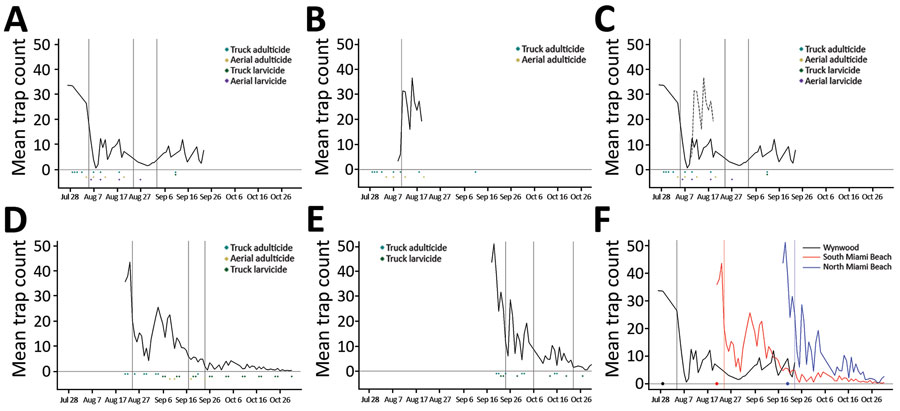Volume 26, Number 5—May 2020
Synopsis
Mosquito Control Activities during Local Transmission of Zika Virus, Miami-Dade County, Florida, USA, 2016
Figure 3

Figure 3. Changepoint in mean counts of Aedes aegypti mosquitoes from areas receiving adulticides and larvicides, Miami-Dade County, Florida, USA, 2016. Vertical lines indicate dates of changepoints for mean Ae. aegypti counts. A) Wynwood neighborhood; B) 10-mile region around the Wynwood neighborhood; C) combined Wynwood neighborhood (solid line) and 10-mile region around the Wynwood neighborhood (dotted line); D) southern Miami Beach; E) northern Miami Beach; F) Wynwood and Miami Beach combined. Points on the horizontal axis represent the first day of insecticide spraying; vertical lines show the first changepoint.
1Current affiliation. Centers for Disease Control and Prevention, Fort Collins, Colorado, USA.
Page created: April 15, 2020
Page updated: April 15, 2020
Page reviewed: April 15, 2020
The conclusions, findings, and opinions expressed by authors contributing to this journal do not necessarily reflect the official position of the U.S. Department of Health and Human Services, the Public Health Service, the Centers for Disease Control and Prevention, or the authors' affiliated institutions. Use of trade names is for identification only and does not imply endorsement by any of the groups named above.